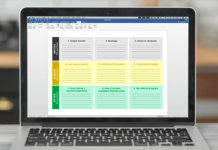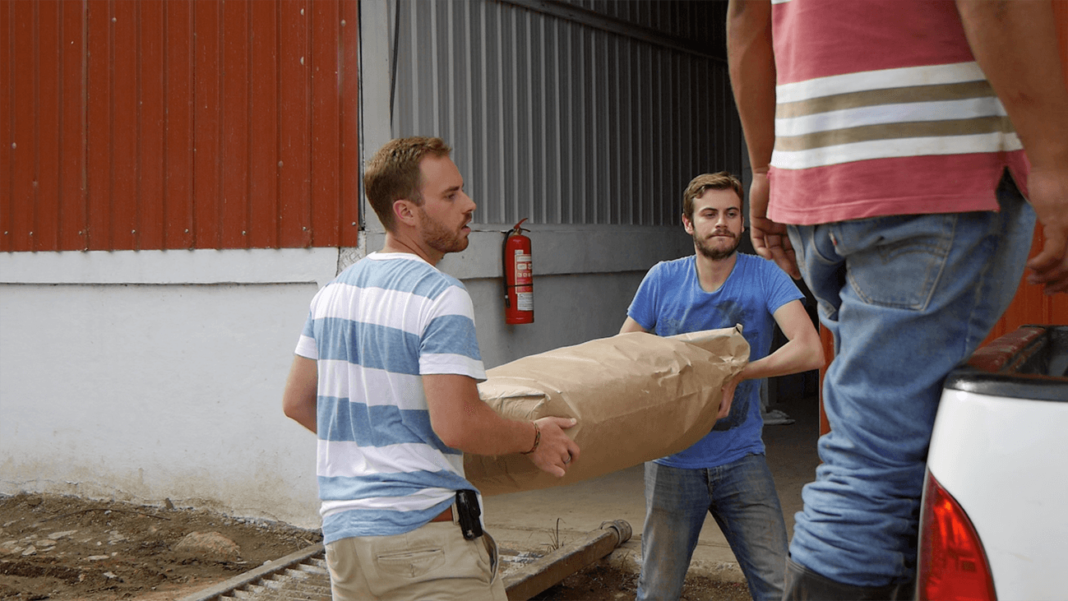[COVID-19] To help mitigate COVID’s impact on tea shops and accessories, Kolau is waiving the fee to create a FORBES Award-Winning website with e-commerce enabled.
Create your website quickly and easily clicking here – Offer available for a limited time only.
Nowadays marketing is not just about selling products, it’s about creating an emotional connection with people. Having an innovative product is a good starting point for any brand, but having an innovative product with a great story of social change impact behind can be an extremely powerful advantage when it comes to developing a marketing plan.
This time we interviewed Max Rivest, CEO of Wize Monkey, an awarded Canadian tea brand that innovates in the way of making tea at the same time it contributes to the social change in the Nicaraguan farm community. Max tells us how they’ve managed to market their innovative product and which have been the keys to their success.
- You won Best New Product at the 2015 World Tea Expo and received the Small Business BC Awards’ Best International Trade award. What makes your company or product different?
Well essentially, it’s the fact that we’re using a different leaf than what has been used in the past to make tea. Traditionally, all the tea out there is from camellia sinensis which is just the tea plant. When you look at green tea or black tea, it comes from the same plant, the same leaf, but just processed differently.
We had the idea after discovering a study about the coffee leaf. To actually use the leaf from the coffee plant instead of the tea plant and use that to make high-quality tea. At first, it was an idea that we had when we were going to school. Eventually, as we finish the school year, we realized that it could be massive sustainability because you can use the leaf on the off-season to create a year-round income. Inherently the product from the coffee leaf is actually very smooth and is very different from a regular tea product.
- We see you have a solid brand image with a nice eye-catchy logo. Which is the thought behind your brand image? It looks like it’s targeting a younger audience. Is that so? How have you built it?
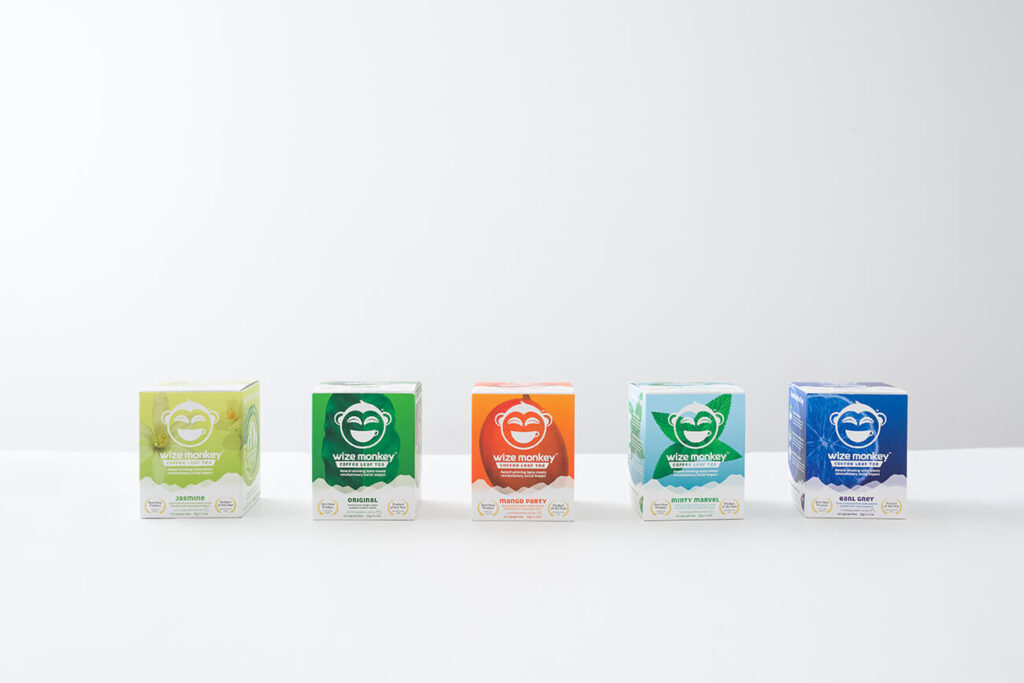
Yes. Generally speaking, our brand direction is for someone around 24 – 32 [years old]. That being said, we have a lot of customers that are in their mid-40s or 50’s that are some of our most loyal customers. There’s a really good case study — that I’m sure anyone could research and it happens often in marketing — about Honda Element launch. It’s the car they released, I think, in the mid-2000s. They market it to the 30-year old couple that was physically active. They go mountain biking on the weekends and they don’t have kids as well. However, the people who are most likely to buy it were older couples in their 60’s and late 50’s.
It’s a bit of an indirect marketing play. When you’re targeting a specific age range, you should choose the one where people want to be that age, whether they want to be older or younger than their age. It sounds kind of funny. But realistically, if you’re doing a brand name age for a 28-year old ‘target’, you’re gonna have eighteen 20-year olds that want to be the 28-year old. Then you’re gonna have 45-year olds and 50-year olds that want to be the 28-year old as well.
This is actually some insight that we got from Christine Day. [She] was the CEO of Lululemon Athletica for 7 years and before that, she worked with Starbucks for 20 years and was one of the first, I think, 20 employees at Starbucks. She was one of our advisors and she told us that our particular product is a lifestyle product.
It is new and a little bit edgy, so it does make sense to market it to a bit younger crowd. At the end of the day, not only do you get the younger crowd, but you can also capture the older crowd because the older crowd is nostalgic to have that kind of youthful energy. In terms of how the age spectrum works, that’s kind of how we’re playing it.
- And why “Wize Monkey”?
Everyone asks that question. At first, we were using the word ‘wise’ but with different combinations and start to play around with it. We figured the people that are gonna have to really change the way that humanity is going, are the ones that are gonna make the wisest choices and the wise decisions to reduce waste, reuse things, or buy from more sustainable companies. Just trying to reduce the carbon footprint in general.
For the ‘Monkey’ part, we thought about it and was like ‘you know what, there are monkeys on the farm in Nicaragua, so why don’t we just call it Wize Monkey?’. We actually learn that there are five families of monkeys that live on the farm in Nicaragua where we operate and so it ended up being a perfect alignment.
- Which marketing channels do you use and which is the one that drives the most customers/leads?
So this is almost like a two-part question here because if you look at our revenue, 90% of it is in retail in terms of traditional grocery distribution. For that channel, we do a lot of samplings in stores and it’s definitely not cheap. The sampling is expensive. For one sampling session for 4 hours, you’re paying anywhere from $130 to 180 USD, so it’s really not cheap. At the same time, you’re building face-to-face connections with people in the place where they’re gonna buy products. So it helps drive sales and build a lot of awareness. It also helps create a better relationship with your retailer because it shows that you are committed to getting the product to sell in the [retail store]. So that’s kind of part one, the more traditional distribution side.
In terms of digital, the majority of our awareness is through Instagram because we work with a lot of Influencers and do small collaborations. It drives a lot of awareness, but I can’t say that it’s our most or best sales source online. I think our best sales source online, to be honest, is our newsletter.
The newsletter is mostly made up of people that we have to meet in person at doing events. This is where we are focusing aggressively right now because we’ve done really well with traditional retail, events, and local pop-ups. But in terms of paid advertising, we do Facebook ads and Instagrams ads, but Facebook is getting so expensive and the reach is just brutal.
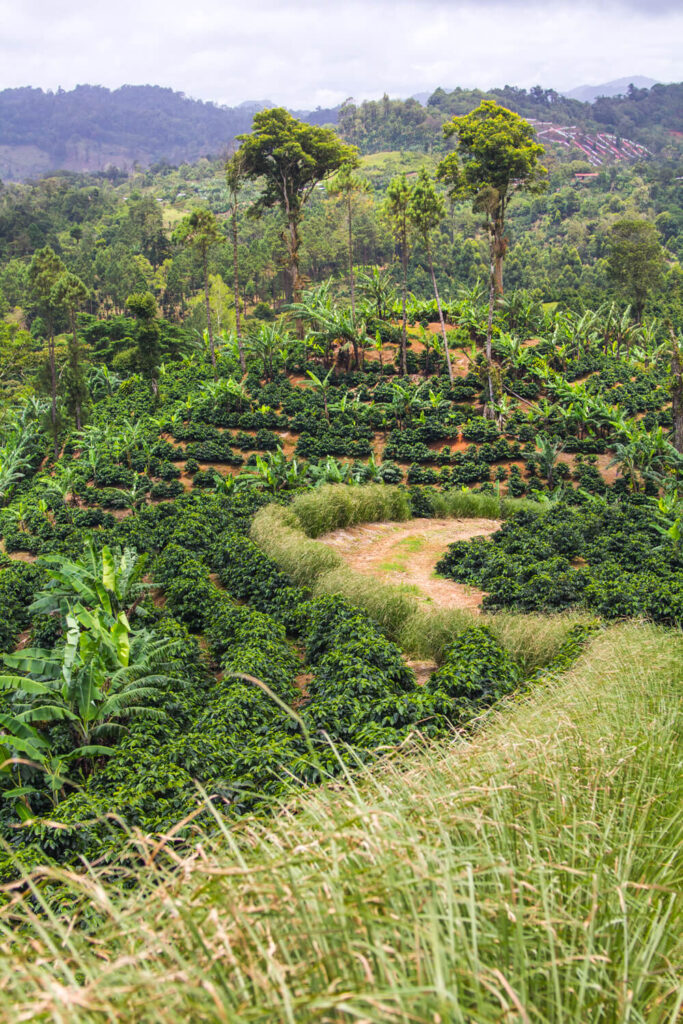
Beyond that, we’re looking to do some more paid articles. Unfortunately, our ethos, in the beginning, was not to do any paid articles. We won’t cheat the system by just paying all these news outlets to talk about us because we felt that was really unauthentic and not the way that something should be talked about. It’s bribing somebody and we felt really uncomfortable doing that. As time went on, we got press. It was cool and good in the early beginnings, but now we’re growing with better products and more success stories. But the press was like, ‘Oh, we’d love to write an article. We like this story, but do you have $5,000?’ (laughs). So I guess we have to pay now. It’s brutal, so we’re looking at different things.
Because Christmas is coming up, we have a couple of articles that we are sponsoring just in the local market in Vancouver and a couple of things in the US. Beyond that, I think our biggest driver for online sales is our newsletters and a lot of it is personal connections, but we are trying to change that. We try to build a more robust newsletter system.
The real challenge is how much do you want to market to the same people over and over again and that’s where it gets kind of exhausting. We don’t want to be that company either. A lot of stuff that we decided in Wize Monkey is because we’re really cynical customers. We don’t trust what major companies tell us (laughs) because we all know now that half the stuff we grow up with is a total lie, and so that’s our generation kind of figuring things out. We look at the same way when we look at our communications and how we talk to our customers. Yes, we still need to make a sale otherwise we won’t survive, but we also don’t want to alienate people and treat them as objects.
In term of where we’re going, we are pushing into some more paid articles just because you’re guaranteed a certain amount of reach. If you put it in the right place with the right people that follow that news outlet, then you should get some kickback on it. I don’t know, it’s still a bit of a new phase for us. We’ve just gotten organic press in the past, so we have to see how it goes.
- In your newsletter, what kind of emails do you send to subscribers?
Well, in the past when I wasn’t so busy, I had time to curate interesting content and have cool blog posts that we would do in-house. In the beginning, it was more casual. You would email customers around once a month and I would do a newsletter saying, ‘this is what’s new’ and ‘check out all this stuff’. But now we’re kind of grown up and we’re getting past the initial grassroots stage and so in the newsletter, we’re starting to send out a little more commercial stuff.
What I’ve been wanting to do – I think we’ll probably do this in January, in the New Year – is to split up the newsletter and start to give people options of what they want. So instead of having one newsletter that has everything, now we’re gonna have more content streams and other things we need to curate so we don’t lose the people on the newsletter.
For example, we have content from the Wize Collective which is our group of artists and creatives that we sponsor. We can do a newsletter for just Wize Collective content and really cool stuff like the music we are listening to or movies that we watch and things like this which gives our brand a bit more of an authentic feel. It gives us a creative outline because it’s fun to share good art and it’s fun to share good media. It also brings a lot of value into the brand when a lot of brands out there are just selling stuff.
That’s something we’re gonna try to do which is to split up the newsletter a little bit so we can retain people, build better loyalty, and have a better relationship with our subscribers vs just sending ‘On sale, on sale, on sale!’. We don’t want to do that because people would just get exhausted and they cut you off, basically.
- What more do you do for customer retention? Do you have any loyalty program?
Yes, we do have a loyalty program. It’s been kinda been in the beta phase for a few months because we want to make sure that we don’t make any mistakes once we launch it. It’s a pretty standard “my points”-based rewards system where if you get referrals, you get points. Then you get points for (amount of) dollars off and products on our website. We’ve noticed that our top customers are using it which is really good. That’s the people that we talk to and say, ‘Ok, what do you think of this?’, ‘How was your experience using this?’, and ‘How can we improve it?’.
Right now, we’re using a Shopify website and we have a plug-in for the loyalty program. We might be moving to another plug-in that’s a bit more robust and a bit more custom to the website, but we’ll see where we’ll go with that. The loyalty program is something we’re working on because it’s a really nice way to reward your best customers, learn how the buying behaviors are, and see how you can bring a new customer from one purchase for the first time to doing a monthly purchase like a subscription. We’re bringing them up that ladder by boarding them with unique, added valued items.
- You have a blog on your website. How important is it in your marketing strategy and how do you use it? What type of content do you publish?
For the Wize Collective, itself, it’s something we wanted to create from the get-go. A lot of people will tell me things like, ‘Oh, don’t waste your time, just focus on the product and getting the sale, to survive and get through this thing’. At the end of the day, it’s something that we always had in my partner’s and I’s DNA. I’m a creative at heart and eventually, it went into business.
For us, we’re making a brand that’s doing something really unique. It’s a particular product that has no widespread culture that exists around coffee leaf tea. It’s a clean slate. There’s nothing there, really. We decided that it should be up to us to kind of create that culture, but how do we do that? Do we share innovative artwork? Do we sponsor innovative, creative people? It all came down to just doing the Wize Collective. It started when we sponsored a muralist in Nicaragua with our first members and it just snowballed from there. For us, using Wize Collective as a strategy, brings us real authenticity, in the sense that we are actually active in the arts community and the music scene. Going forward, it will just build over time.
People are being shown our products, our brand through these artists and creatives where a tea company has never been there before. If you look at a famous DJ or a famous skateboarder, most brands that are gonna sponsor those people are energy drinks [companies], alcohol brands, or fashion brands. If we go in there and say, ‘ Hey, Wize Monkey is doing something good. It’s good for your body. It tastes great. It’s good for the people producing it as well.’, these artists now are having a bit more of a social conscience. All of a sudden, you see these followers they have. It’s nice that they have a social conscience and they’re like, ‘What’s this brand? What’s this Wize Monkey? I don’t even drink tea, but I would try this one.’. It’s an indirect way of getting new people through a credible source from someone that has already curated their own network. It’s like sponsoring any other artists, professional athlete, or whatever it may be. The fact that we’re doing it in the art space for a tea brand is unique. That hasn’t been done before.
- How do you get in touch with these famous people?
It’s not the easiest thing in the world for sure. I wouldn’t say anyone on the Wize Collab team is overly famous (laughs). But they’re all up and coming creatives and very dynamic and innovative people. Sometimes we meet them in person. Sometimes we go to a concert or show and they’re the opener. We’re like, ‘Wow, you killed it. We love your work. We love to sponsor you in some shape or way.’. Really, a lot of it is just discovering things on Instagram and messaging or emailing them and say, ‘Hey, we like what you do, we just want to send you some free stuff. If you like it, let us know if you want to do some collaboration.’. I wish it was easier. I wish there was better conversion, but as it goes, you probably send about 20 of those emails to get one back if you’re lucky. It’s just a matter of building it over time. These things do take time and that’s why I started really early versus starting 2-3 years from now and having to create a whole new thing out of nowhere. All of the sudden, it feels like you invented this concept. You have 10 people thinking, ‘Was this really part of the company as it kept going or is this just a marketing planned out?’. That’s why we started early because it takes time. As you get more members, as profile rises, then you get another better person. You just build the team up as you go.
- As you’ve said, Instagram is an important part of your digital strategy. How do you use it? What type of content do you post?
Right now, it’s a little bit all over the place. A lot of it would be new product launches, if we’re traveling somewhere, or if we’re going to events to let people know in advance. As we are coming to Christmas, I’m actually getting some photos done right now. We’re going to do some more product shots and more lifestyle shots of seasonal stuff. As we are heading into fall, we have just launched a new Chai and creating new shots of that. We have this whole strategy written down.
There’s this content makeup where its 20% promotional, 50% story/brand, then you have ‘X’ and ‘X’ leftover to kind of fill it up. I wish we could adhere to that a little bit closer considering that it’s just me and a couple contractors here and there. It gets really difficult to stick to that. I wish it was something I could throw at like $3,000 at photos and just have a photographer ready to go all the time, but it’s not always the case for a startup. You have to manage your cash flows and you kinda have to be smart with how you spend it.
Generally speaking, for us, we want to keep it not so promotion heavy. The thing with Instagram is that people are really passive. They see promotion and they immediately scroll. As soon as something is trying to sell them something, they will just go past it. But if it’s a photo of people that are in the business and they’re somewhere at a conference, but they’re doing a funny photo in front of a monument, that gets a ton of traffic because it’s an authentic story. It shows you real people are doing this and it’s not just some bots. There’s a way to kind of balance that by keeping the promotions to a minimum and have a little post about it here and there. Another way to keep it really authentic and fun is by using Instagram stories. With that, we’ll do more of behind the scene stuff and that brings a human aspect to it as well.
- So which types of content are you getting more engagement with?
A lot of behind-the-scenes stuff gets more engagement and telling the story of the farm. So some of our best photos come out as amazing photos because the farm is so beautiful. They’re the best because it reminds people of why Wize Monkey is here. We’re doing this because it helps people as well. So if it ends up being some really pretty photos of the product on a nice table somewhere, that’s fine, but it gets old really fast. We gotta try to diversify things and bring it back the authenticity and really the origins stories of what started the whole brand and the reason behind it.
- You’re also on Twitter, Facebook, Pinterest, and YouTube. Have you defined different content strategies for each social platform?
For Pinterest, it’s more like quick recipe ideas and creative projects. When people scroll through Pinterest, if they’re seeing a recipe for a cocktail, they’ll all of the sudden see the quickest way to make iced tea cocktail. That is more attractive to Pinterest users because they’re there with the goal to discover something new.
Whereas, Instagram is really about what’s going with the people you already know and keeping up with what’s current. Pinterest is about finding and creating new projects like recipes and DIYs. It’s a different platform in that sense. Generally speaking, the actual ad rates for Pinterest are much cheaper than Facebook’s. You get good quality leads off of Pinterest. We’ve been using Pinterest, I would say, a good 2-3 months now. I wished I had started it earlier because it is proving to be a pretty useful platform and there’s a lot of things we need to do to create content for that platform as well.
- We see that you’re using high-quality videos to promote your brand and products such as a documentary series. Do you think it’s worth investing in the video? Which are the benefits of using this format?
So we created a documentary in 2016 and to be honest, we used that footage in so many different ways and it’s the best money we ever spent. A lot of it we use for press and we also use it for different advertising and different videos for ads. For example, we have a 50-second video that we’ve used on Instagram. We have a 15 second Instagram story that we’ve used as well. There are so many ways to cut it up. We did a 15-minute documentary that’s cut up into three parts.
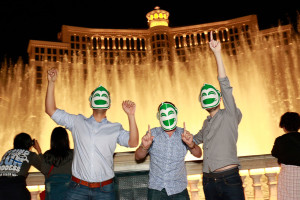 The 15 second Instagram stories get a lot of good views and impression, but the thing is that it doesn’t really explain the whole story, obviously. So the 15 second one (under a minute) is the best, hard-hitting one because you have enough time to explain what’s going on and explain the product, but it’s not too long that you’ll have a massive drop off in viewers.
The 15 second Instagram stories get a lot of good views and impression, but the thing is that it doesn’t really explain the whole story, obviously. So the 15 second one (under a minute) is the best, hard-hitting one because you have enough time to explain what’s going on and explain the product, but it’s not too long that you’ll have a massive drop off in viewers.
The challenge with our brand and our product is that it’s such a new thing and people don’t know that tea is from a tea leaf. They don’t even know what it is. They don’t even know that coffee bean comes from a coffee plant which also has leaves. (Laughs) It’s like we have to educate on coffee and on tea and then explain what we do. So it’s kind of a difficult challenge and so that’s why we’ve done this documentary thing. There’s a lot of facets to it. The social aspect is huge. There’s a lot of indirect and different socio-economic factors involved. We really want to tell the story to the full extent, but at the same time, not everybody spends the time to watch it, to listen to it, or let alone interested in it. That’s why we’re doing all these different sizes and lengths. It is to see how it does it different platforms.
I wish we could do more videos. I’ve been planning to do a monthly update for Wize Monkey for the last few months. It’s something we want to invest more in and we’ll be shooting another photo/video series at the end of October.
- So you think it’s worth the effort to produce the video because you get a lot of return from it.
It’s hard to say the direct ROI because the videos are in so many different platforms and it’s not like someone could click on the video and immediately buy it. At the same time, we don’t have the 10 million users to see how many people clicked on your videos. So it’s hard to say how much ROI is driving. But generally speaking, it works super well. For all the new retailers we take on, we send them the 50-second video and we send them the 15-second video. We’re like, ‘Ok, here’s are two short ones. You can use them for Instagram stories. This is vertical and this is a regular landscape 15-second video, you can use for your Instagram post or Facebook. And here is the length for the full-fledged documentary’.
We are building the customer’s journey. So you have the really short video to just entice people and be like, ‘Oh, what is that? It’s really interesting’. Then for the 50-second video, they’ll be like, ‘Oh wow, it really is innovative and the social impact is really cool’. And then they’ll watch the documentary and be like, ‘Oh wow, this is way deeper than I thought. This is interesting’. So if you shoot a 15-minute video, you can have so much footage and clips. They could be cut up for different uses. It kind of the best way to set up your brand and also have content to reuse in different ways.
- Which advice would you give to a startup that is in the beginning stages?
If you’re doing a product that is going to be sold at other stores, I would be very cautious about only choosing a small number of stores. Make sure that once you know it sells really well and refine your turnover in those stores, take that formula and go to more stores. So it’s basically like digital marketing. If you’re going to do an A/B test and you have one method doing super well and they have a good formula, then scale that formula.
The challenge in our business in the grocery world is that we went into a lot of stores really fast and after that, you have to make sure that people in that area know about the product they’ll buy at the store. Just because it’s on the shelf, doesn’t mean it’s gonna sell. So that’s a really tough challenge. For us starting up, I think we may have gotten in too many stores right at the beginning. We spent a lot of money on samplings. We should have spent more time in digital [marketing] first.
Now, we’re trying to focus our strategy on digital. If I had the money right now, I would immediately go higher, like hiring an e-commerce expert for like 100 grand a year. Immediately get that person in the very beginning if you can or find someone who has a legitimate experience in e-commerce. Because if you spend $60,000 on someone in e-commerce, you might only make 20 grand in sales in e-commerce. But if you spend $100,000 on someone in e-commerce, you might make $250,000 in e-commerce. Once you get to that certain expertise level, then the ROI just gets multiplied. It’s something you try to get early on and try to incorporate into the business, from the genesis of the business, not something you add on later.
- Finally, give us a prediction of what you think will be the best way to win customers in your industry in the next few years.
That’s a good question. I wish I have a perfect answer for this. I think to do more in digital in terms of communication with customers and have a two-way conversation. I know that sounds really cliché but if you look at, for example, a lot of brands are creating Facebook Groups instead of Facebook Pages now because the Groups have better reach when you post in there and people can post in it as well. Whereas on the Facebook Page, it ends up being a really throttled reach, like they control the reach so you don’t go really far. It also ends up being a one-way conversation. There’s no real activity of actual customers. If you create a platform where customers talk to each other, then it creates a connection between people and it amplifies the connection of the brand.
So we’re just launching a Facebook Group for Wize Monkey fans, essentially. We’re going to start populating it with recipes, do contests, and create more user-friendly content with the Facebook Group because it’s easier to connect to people and they could talk to each other. But beyond that like doing tactical things, I think, generally speaking, if your brand has real authenticity and shows that you’re also fun, innovative, interesting people beyond just the product, I think that stands out a lot. At the end of the day, it’s the quality and design of the product and how it’s delivered.
The user experience from start to finish is the most stand out things, especially now in e-commerce, where you disconnect the retail aspect and it’s just the package arriving at someone’s house. They have to love the experience from start to finish, so the design is a big thing and having your customers be able to talk to each other is really important.
________
Kolau is the easiest way to rank your small business on the first page of Google. Start owning your small business online presence today! No marketing knowledge needed. No agencies required. Now you know, now you can.
Be sure to subscribe to our blog for more articles like this!



